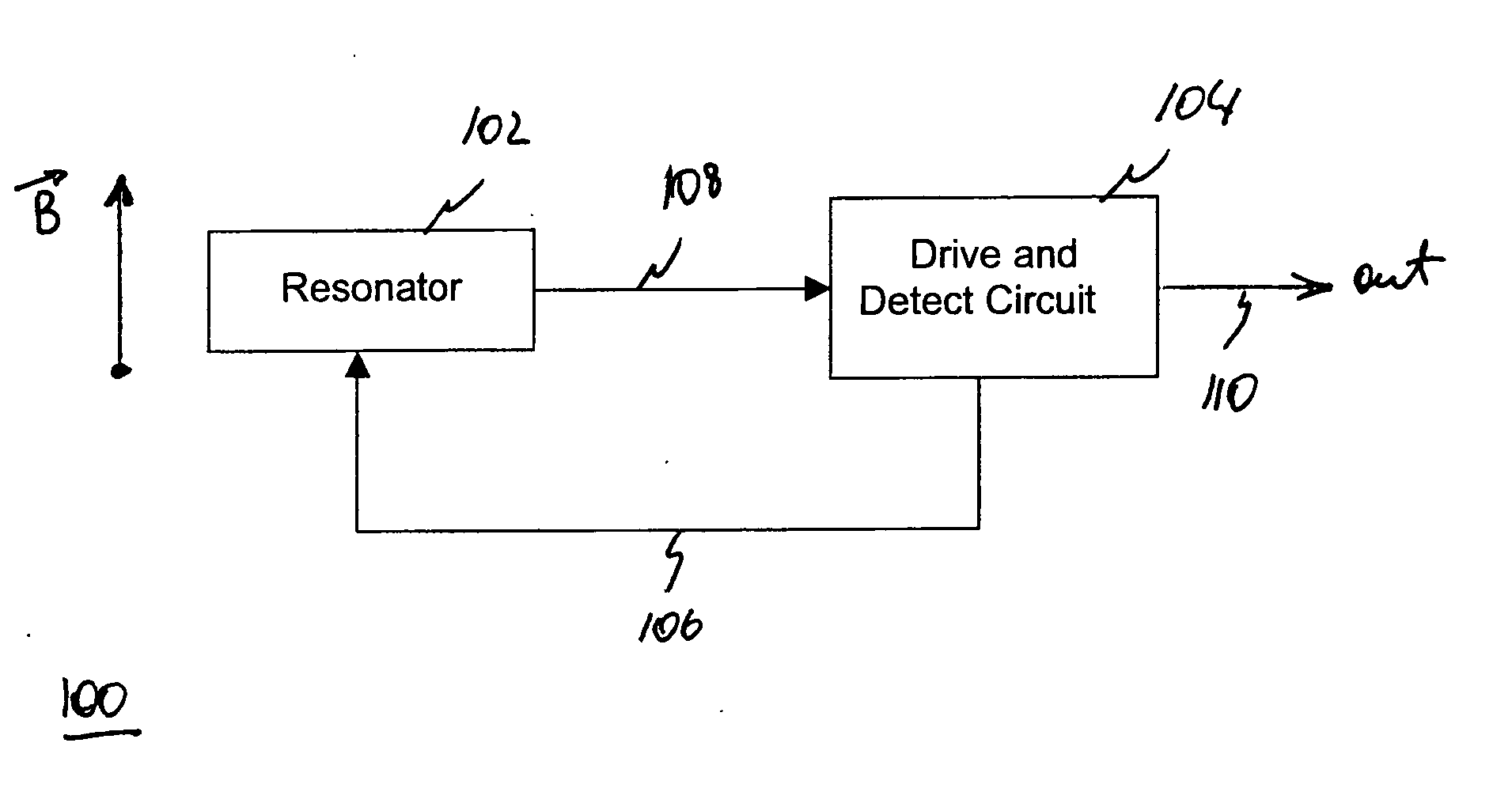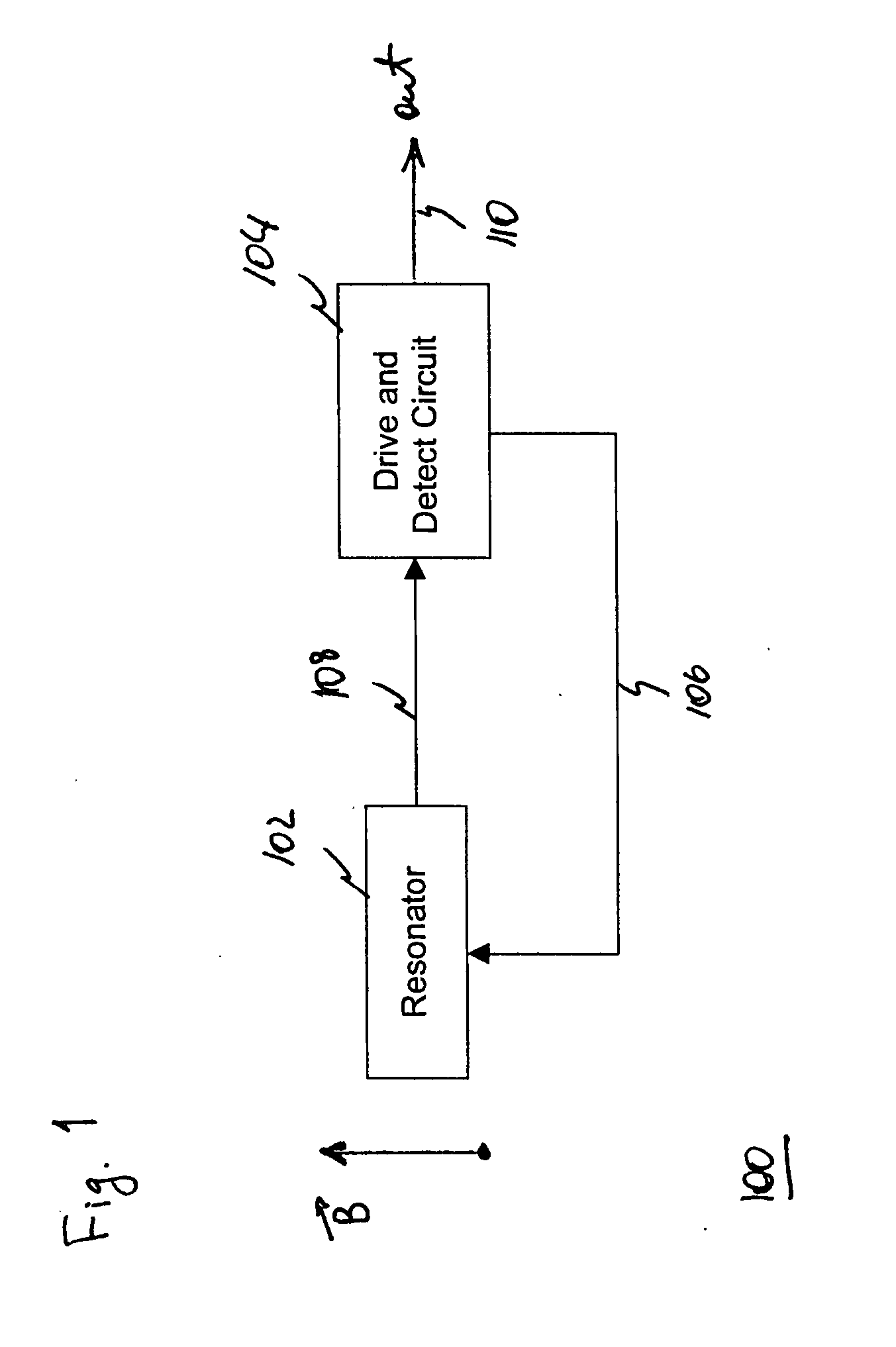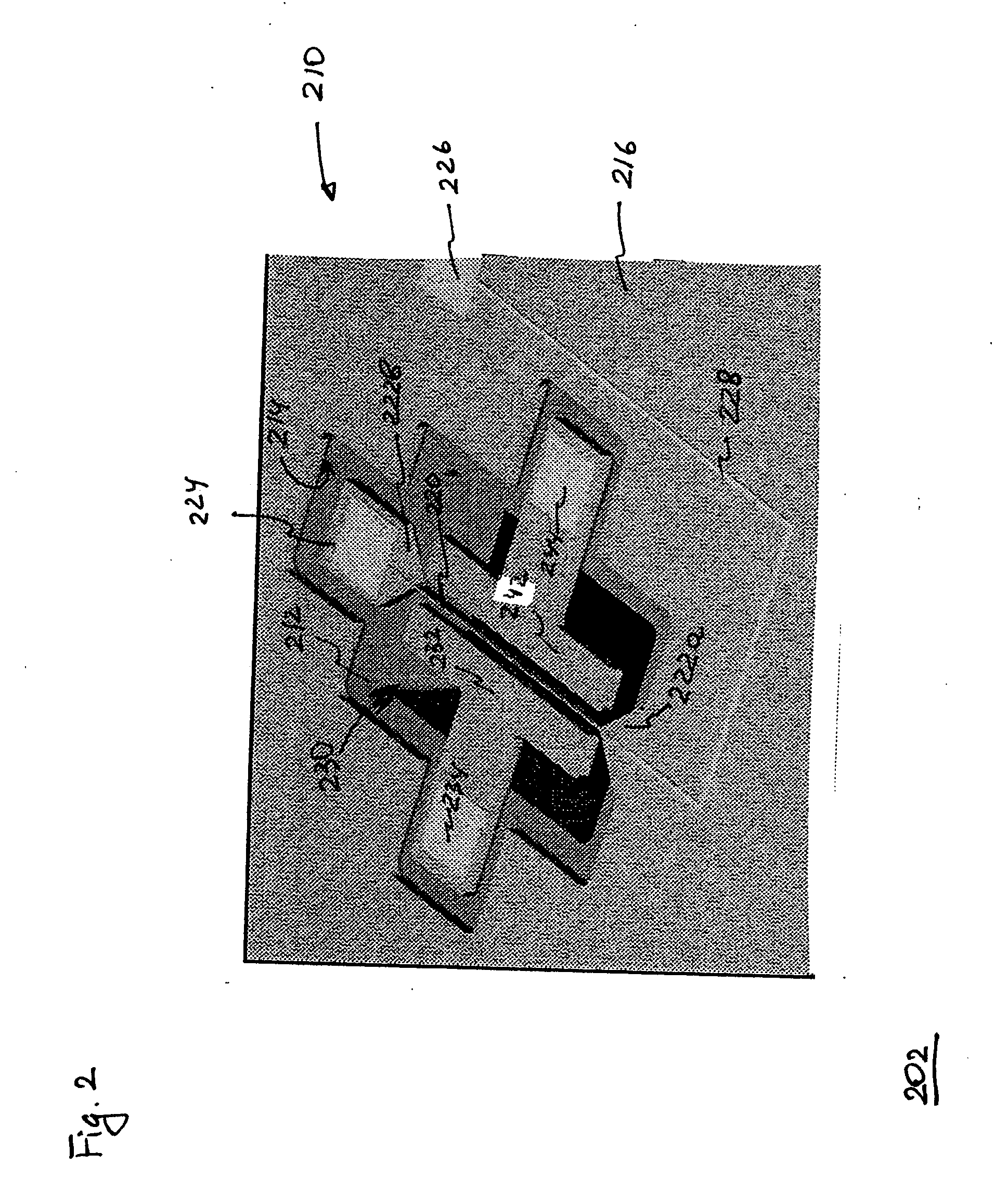Magnetometer having an electromechanical resonator
a technology of electromechanical resonators and magnetometers, applied in the field of magnetometers, can solve the problems of excessive heating and/or unacceptably high power consumption, strong micro-magnets, and relatively difficult processing and integration, and achieve the effect of dampening the oscillation of deformable beams
- Summary
- Abstract
- Description
- Claims
- Application Information
AI Technical Summary
Benefits of technology
Problems solved by technology
Method used
Image
Examples
example 1
A. Example 1
[0069] Suppose that one wants to monitor variations in the Earth's magnetic field (which has a strength of about 0.5 gauss) and, based on fabrication, vacuum, vibration, and / or electronics issues, requires a relatively high value for f1, e.g., f1=20 kHz. Then, resonator 202 satisfies this requirement when beam 220 is implemented, e.g., using the following parameters: w=1 μm; l=620 μm; h=7.75 μm. Using the conductivity of doped silicon (i.e., the material of beam 220), one finds that the beam has a resistance of about 800 Ohm. If this resistance is the load resistance (e.g., contact pads 224 and 226 are simply connected by a well-conducting wire) and Qint=105 then BQ=1670 gauss. Alternatively, when beam 220 is covered by a film of gold that is about 0.6 μm thick, then Rload≈Rgold≈26 Ohm and BQ=300 gauss. Selecting gd=gD=15.5 μm and using Eq. (46), one also finds that the maximum bias voltage for bias generator 312 is about 120 V.
[0070]FIG. 5 graphically shows resonant fr...
example 2
B. Example 2
[0072] The region of optimum sensitivity for resonator 202 can be shifted toward lower fields by implementing the resonator with a relatively low value of f1, e.g., f1=2 kHz. Resonator 202, in which beam 220 has the following dimensions: w=10 μm; l=6200 μm; and h=77.5 μm, meets this specification. When beam 220 is covered by a film of gold that is about 2 μm thick, Rgold≈7.4 Ohm and BQ=160 gauss.
[0073]FIG. 7 graphically shows magnetometer sensitivity as a function of the magnetic-field strength for resonator 202 that is implemented with the above-indicated parameters of this example. Curves 702 and 704 correspond to a drive signal resulting in ymp / w=0.1, and curves 706 and 708 correspond to a drive signal resulting in ymp / w=1.0. Curves 702 and 706 represent a configuration in which Bbias=0, and curves 704 and 708 represent a configuration in which Bbias=160 gauss. FIG. 7 indicates, for example, that, when the resonator is driven with ymp=w=1.0 in an external magnetic fi...
PUM
 Login to View More
Login to View More Abstract
Description
Claims
Application Information
 Login to View More
Login to View More - R&D
- Intellectual Property
- Life Sciences
- Materials
- Tech Scout
- Unparalleled Data Quality
- Higher Quality Content
- 60% Fewer Hallucinations
Browse by: Latest US Patents, China's latest patents, Technical Efficacy Thesaurus, Application Domain, Technology Topic, Popular Technical Reports.
© 2025 PatSnap. All rights reserved.Legal|Privacy policy|Modern Slavery Act Transparency Statement|Sitemap|About US| Contact US: help@patsnap.com



